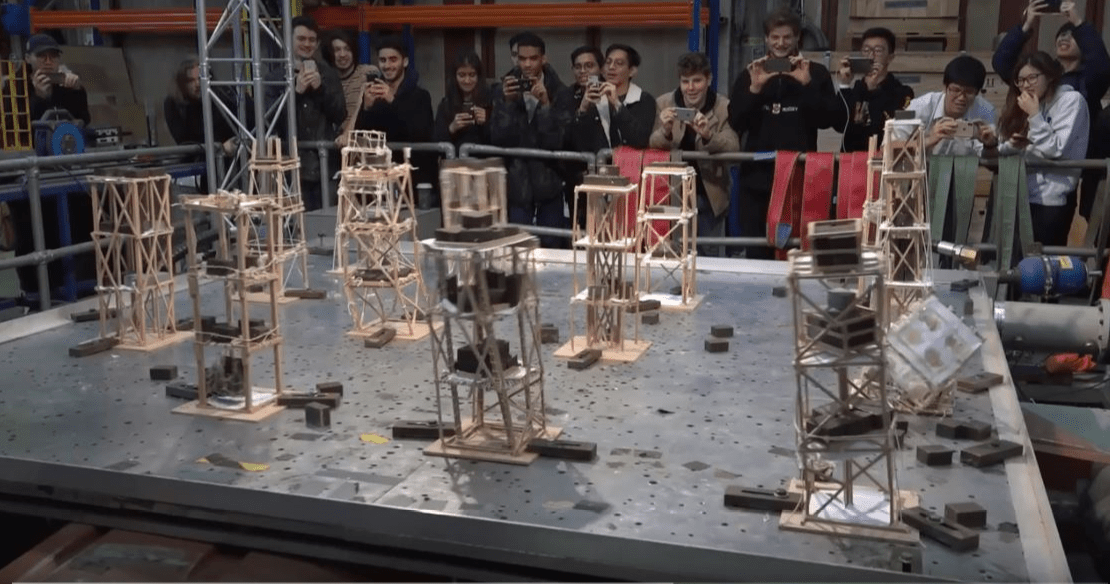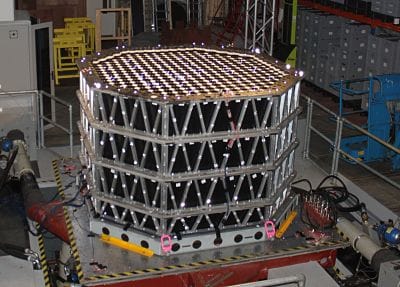
Earthquakes are rare in the UK, but not unknown: the remnants of old tectonic faults run across the country, and still occasionally have twinges – the British Geological Survey detects about 200 to 300 earthquakes per year, of which 10 per cent are strong enough to be felt by the public. Equipment used at Bristol University to test the resilience of structures against earth tremors will be visiting London for the Royal Society’s Summer Exhibition, which runs this week at the venerable organisation’s headquarters.

The exhibition is a free event at which universities, companies and other organisations involved in STEM invite the public to view and ask questions about some of their most interesting projects.
This year’s event has 22 exhibits, covering subjects including autonomous vehicles (courtesy of the University of Leicester); how mathematical modelling is used to produce images of and improve drug delivery to tumours (University College London); the possibilities of building wooden skyscrapers (University of Cambridge); the progress of lunar science since the Apollo landings and how it might lead to humans living and working on the moon (a collaboration involving the Open University, Natural History Museum, and Birkbeck, Manchester and Oxford Universities).
The Bristol exhibit, entitled “the Great Bristol Shake Off”, includes the university’s shaking table, capable of simulating tremors up to magnitude 7.2 (quakes in the UK have never exceeded 6.1). Exhibition visitors will be able to construct their own ideas for earthquake-resistant towers, which will be tested at the event.
Also on display will be a quarter-scale model of an advanced gas cooled reactor (AGR), a type of nuclear power reactor unique to the UK. AGRs were built in the 1970s and 80s and have a core made up of thousands of interlocking graphite bricks into which fuel and moderator rods are raised and lowered.
As these 14 reactors age, and the neutrons produced by the nuclear reactions race through the graphite, the material acquires many fine cracks. It has not been known whether a severe seismic event might cause the bricks to move in such a way that the reactor could not be shut down safely, so the Bristol team was tasked with producing a model that could simulate the movement and test whether this might be a problem; a project which was shortlisted for The Engineer’s Collaborate To Innovate Awards in 2018.
The model consists of some 40,000 components and over 3000 sensors. “The team designed and developed the whole model, including bespoke miniaturised data sensor systems that are inserted in many of the model bricks to measure their response in detail,” said Colin Taylor, professor of earthquake engineering in the Department of Civil Engineering. “We believe this is the most complicated shaking table experiment ever undertaken and our research can contribute to nuclear safety in the years to come.”
Jim Reid, chief graphite engineer at EDF Energy, added: “The results from the tests being carried out [using the model] have been used to improve and validate the computer models that are used by EDF Energy to assess the seismic safety cases of all of our reactors and have helped us to show that the reactors would be able to shut down as designed with no erosion of safety.”




Viking Link connects UK and Danish grids
These underwater links must, based on experience with gas pipelines, be vulnerable to sabotage by hostile powers. Excessive dependency on them could...